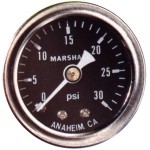Chanter Reed Selection—The Match-Up
 The ideal bagpipe sound starts with selecting the ideal chanter reed. Obvious? It is not always as easy as it seems. Personal preferences and taste coupled with what amounts to unlimited choice in makers and quality of chanter reed makes that initial task of selecting your ideal reed a bit more daunting. But unlimited choice or no, just pulling a reed from a batch or batches at random will never give you the sound you need. The characteristics of your chanter reed should be suited to you and your needs just as the length of your kilt is suited to your height. Several factors come into play (individual makes notwithstanding) when taking the first step and selecting a chanter reed and all must be weighed accordingly if you are to play the best reed for you.
The ideal bagpipe sound starts with selecting the ideal chanter reed. Obvious? It is not always as easy as it seems. Personal preferences and taste coupled with what amounts to unlimited choice in makers and quality of chanter reed makes that initial task of selecting your ideal reed a bit more daunting. But unlimited choice or no, just pulling a reed from a batch or batches at random will never give you the sound you need. The characteristics of your chanter reed should be suited to you and your needs just as the length of your kilt is suited to your height. Several factors come into play (individual makes notwithstanding) when taking the first step and selecting a chanter reed and all must be weighed accordingly if you are to play the best reed for you.
The Match-Up
Matching a reed to your personal bagpiping needs is as important as finding the right shoes that match your suit and fit your feet comfortably. Any old reed just won’t do. If you’re thinking about this, you’ve already completed your chanter reed physical exam and chosen a few good looking, well constructed reeds for testing. A physically well-made reed may give you an idea about its potential, but in order for the reed to serve you well, you will need to consider another “checklist†of considerations to figure whether the reed is a good match for you.
Every piper is different and you are the one who knows your needs best. You will need to answer several questions about what you’re after in a chanter reed if you are going to find reeds that give you exactly what you need. Keep the answers to these questions clearly in your mind as you test reeds.
Question 1: Will the reed be played for solo performance or band?
If your reed will be used primarily for solo competition, you will want to select a reed that is likely to give you a lighter or brighter quality of sound. A reed that has an easy-to-produce sound in the mouth, one that changes smoothly out of its “crow†with only a bit of extra blowing effort, might produce a brighter quality sound. The sound or general pitch of the crow sound itself can also give you an indication of the color of sound you will get. If your chanter leans toward the flat side of general pitch, choosing a reed with a higher pitched, and brighter sounding crow might be the way to go. If you’re choosing a band reed, the reed that shows bigger thickness in the blades and a “beefier†body therefore should be more robust and vibrant, and more likely to hold a stable sound for longer periods.
Question 2: Will the reed only be used occasionally for gigs or parades?
If you require a reed that will be used only once in a while for short gigs or parades, a good candidate will be the one that has an easy strength for you, pops easily out of its crow, and has a light thickness of the blades. Its longevity and stability might not be much of a concern, so you might be able to afford to be less discriminating.
Question 3: What strength will be most comfortable to play?
It’s important to gauge the strength of each of your selected reeds given the answers to the above questions and your personal comfort levels. A reed used occasionally might not need to be as strong as a reed for band use, for example. Reeds that possess all the right characteristics you’re looking for but yet take too much effort for you to blow even before you place it in your chanter will never vibrate fully enough to reach their optimum pitch. The size of the aperture or opening at the top of the blades will give you an initial indication of overall strength. A fairly large opening between the blades will be harder to blow (and remain so) than a reed with a narrower opening. The general quality of sound vs. strength is a personal one and will only come through experimentation. If you know you are a “wet†blower for example, you might require a reed that is just a bit past your blowing comfort since the extra body on the reed will be better able to handle excess moisture. Likewise, if your experience is that reeds change very little when you play them, then choosing a reed that is comfortable to blow right away could be the one for you.
Once you have a established the size of the reed aperture needed to give you a comfortable sound, it is a simple matter to make sure all of your reed selections match in their aperture size depending on the make.
Question 4: What quality of sound am I after?
The general quality or “color†of sound will be a personal one. A selection of reeds across various makers may have all the good physical characteristics you need, but may yet have a different color of sound when you test them by mouth. As you test each of your reed candidates, listen for the ones that are most pleasing to your ear. A harsh, raspy sounding crow in your test might give you the vibrancy you need when played in your chanter, but that might just be too harsh sounding or overpowering for solo competition. A reed that will produce a mellower sound is likely to give you a softer sounding crow on initial testing. You will notice lower and higher pitched crows as you move reed to reed. This will give hints at the playing pitch you will get in your chanter.
Question 5: What kind of reed will suit my chanter?
Time and experimentation are the only things that will give you the knowledge of your own chanter needs. Some makes of chanter will have consistent reed needs but individual variation chanter to chanter still exists. If your make of chanter is particularly prone to needing a higher pitched reed for a true scale or needs one with a flatter top hand, then you can pick out a reed that is likely to give you that result. Select the reeds that have a bit more material on the blades and a “chunkier†appearance. The more material on the reed, the faster and more consistently it is likely to vibrate and the higher the pitch. Conversely, a reed that has a lighter thickness in the blades vibrates more slowly at optimum pitch and will produce a flatter sound. It may also give you a higher pitch in certain chanters, provided its overall strength is easier for you and you are able to blow it to that level. This same reed, however, might also provide the flatter top hand you might need for your chanter. A reed that is hard to push out of the crow by mouth might give you a flatter sound on the bottom hand notes of the chanter. This characteristic, however, might be what your particular chanter needs to achieve a true scale.
The Perfect Match
Once you have selected and tested some reeds and found one or two good candidates for your needs, you are ready to go about phasing in the reeds for their break-in period. If you are not playing them right away, make sure you handle your new reeds as little as possible. Grab the reeds by the staple for the time being and keep them stored in an airtight container away from extreme temperature. When you are ready to preflight the new reeds in your chanter and start tuning, they will be ready to go.
 Pipehacker
Pipehacker







